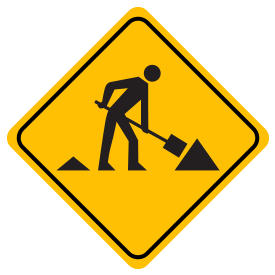How to minimize: From utility conflicts to poor soil conditions and beyond, foresight and preparation can go a long way when it comes to overcoming project surprises.
You can't predict the future, but you can prepare for it. Here, veteran project managers Wayne Wambold and Greg Anderson share specific methods to minimize seven of the most common project conflicts and surprises.
1. Utility conflicts

Unknown or unseen pipes have the power to bring your project to a standstill. If you uncover one during design, your engineer can usually design around the conflict. However, if one is discovered during construction, you’re likely to get a phone call from the field representative.
How to minimize: Research and investigation
According to SEH Principal and Project Engineer Greg Anderson, “It i s crucial to involve your private utility at the initial stages and throughout the design and construction phases. They often possess valuable insights that may not be found in record plans or other sources."
How to minimize: Contract language
Make sure your construction contract language accounts for a show-stopping utility conflict. “A well-drafted contract will clearly define the collaborative approach for resolving any unforeseen utility conflicts among all involved parties, including the contractor, owner, and designer,” says Anderson
Crisis action plan
“It’s important to anticipate potential conflicts by focusing on specific areas of your project where you may have doubts about the accuracy of the information,” continues Anderson. Then, think ahead to what action and processes you might have or need in place if a crisis occurs. If you hit a utility conflict, what tasks need to be done and who will do what? During a crisis, having an action plan in place will keep you focused on doing rather than on figuring out what needs to be done.
2. Right-of-way issues

Sometimes project owners want to undertake a project but don’t know how much right-of-way they have, or they think they have more than they actually do. In some cases, they discover they don’t own enough right-of-way to build their projects. At this point, you have two options and both are going to slow you down. You can either go back to the drawing board and redesign the project to reduce right-of-way needs or acquire additional right-of-way. Even with a willing seller, you’re going to have a delay.
How to minimize: Surveying and title searches
“The complexity of right-of-way ownership lies in the uncertainty of relying on certain maps, making it a challenging aspect to navigate,” says Anderson. Where should your project confidence come from? Confirm your right-of-way ownership with a professional survey or title search. Both can help you get a better picture of ownership. With parcel data readily available online in most locals, private property owners are often quick to call out work outside the ROW. This GIS-based data is usually not 100% accurate, so a little prework can head off a potential angry resident encounter.
3. Environmental permitting delays

Environmental permitting is complicated in the best of circumstances. Regulatory agencies update requirements on a regular basis, and small oversights can cause big delays – a minor mistake can put a project on hold indefinitely.
How to minimize: Look upstream and downstream
Are you aware of all the lakes, wetlands, or streams impacted by your project? Upstream and downstream? Your project might have greater area of impact than you think, resulting in the need for more permits.
Be an early bird
Regulatory agencies may increase permit review time when aquatic resources are affected. While the actual time frame varies from state to state, even year to year, be safe and submit your application early – anywhere from eight months to a year – otherwise you might stall your project, or worse, lose funding. Remember, many permit applications don't require a full design. As soon as the preliminary design is complete, send in that permit!
4. Public or political delays

For better and worse, some projects attract more attention than others. If your project touches a sensitive ecological area, historical properties, or brings significant change, you can encounter delays if you’re not prepared.
How to minimize: Engage stakeholders authentically
At its best, public participation is not a checkbox but a genuine attempt to engage the right stakeholders in the right place at the right time. Use the right participation tools and make sure you understand what public and political repercussions might complicate success.
Today's public is increasingly engaged and knowledgeable. With easy access to information, people now demand more input and engagement in projects, and they prefer to be involved earlier in the process. You need to be proactive to avoid unnecessary negative input on social media or during the public comment section of a council meeting.
5. Poor soil conditions

Say it turns out that the ground at your site doesn’t want to support your project. What are the culprits? Your site conditions are full of highly compressible soils, like soft clay, silt, or organic deposits (peats), which shift and sink beneath the weight of your road, bridge, or building. Or there are unexpected water issues. In rare cases, you may be able to relocate the project to a different site.
How to minimize: Get more soil samples
Budget for more soil borings to better characterize the ground beneath your project. “You don’t need to turn the site into a pin cushion,” says SEH Geotechnical Engineer Wayne Wambold. “But, used in coordination with any other geological site data you may have, you can usually get a good idea of where and how many borings will give you the most bang for your buck.” Good planning – and understanding of a phased drilling and testing approach – will help reduce risk when dealing with a difficult site.
...you can usually have a good idea of where and how many borings will give you the most bang for your buck.
– Wayne Wambold, PE
Timing your testing
If you complete your subsurface investigation in the fall, after a dry spell, and are building in a wet spring, you may discover beneath the surface a rising water table ready to wreak havoc on your construction schedule. More than just the quantity of boring samples, timing your testing and understanding seasonal variations is essential to reduce your exposure to risk.
6. Poor weather conditions

One of the most common causes for construction delays is unexpected and prolonged poor weather conditions. Nothing brings a construction project to a grinding halt faster than several weeks of rainy weather. Early onset of winter weather can also kill a project schedule. Just when some of the most critical and important final steps of a project need to be completed, a foot of snow on top of freezing weather can end the contractor’s construction season – and end your project until the next spring.
How to minimize: Have a contingency plan
Of course, you can’t control the weather. But you can have a contingency plan for keeping your project moving during poor weather. Identify the project tasks in advance that are not time-sensitive but can be completed any time, even during inclement weather. Discuss these tasks with the contractor at the start of the project, and plan to reserve the completion of them for times when poor weather causes delays in other weather-dependent tasks.
Reserve time for weather delays
It sounds obvious, but the sooner you start the project, the sooner it can be completed. Set up the overall schedule with weather delays in mind, and allow for them in both the initial design field work and the construction phase of the project. For example, set the bid date early enough so there is more than just the minimum time needed to complete the construction work before the winter freeze-up. Weather delays can easily add 10-20% to the duration needed to complete a construction project. Why not add this extra time to the schedule to begin with? Start the project early, and complete the project sooner than expected if the weather cooperates.
And if your project doesn’t wrap up before cold conditions strike, consider if your project can function at 90% completion over the winter. If so, consider saving the final 10% of the project (wear paving, final turf establishment, etc.) for better weather in the spring to complete these highly visible project components. Having a chance to “spit-polish” the project in the spring leaves a better aesthetic of your project for the public.
7. Availability of materials and labor

Some projects can be delayed by either long lead times on construction materials and equipment or the lack of availability of experienced subcontractors on certain trades. It is easy to assume when planning out a project that all of the materials, labor, and equipment needed to build the project will be readily available when you need them. However, the reality is that the availability of materials, equipment, and labor is greatly influenced by supply and demand. At times, a shortage of one of these items can sneak up on you and cause an unexpected delay.
How to minimize: Identify potential long lead times in the planning phase
Certain construction materials, equipment, or specialty trades are known for their long lead times, while others are almost always available. Availability of materials, equipment, and subcontractors can vary widely depending on the project location, type of construction, time of year, and other factors. Talk with your engineering consultant early in the planning phase, and develop a list of potential long lead-time items that could become part of the project. Check into the actual lead times for these items to confirm whether there could be a future delay.
Adjust the project schedule or the project design
If you discover a potential future delay due to the use of a specific material or equipment with a long lead time, consider adjusting the project schedule to allow additional time for placing the order, fabrication, and shipping. If the schedule cannot be adjusted due to a fixed completion deadline, consider adjusting the design of the project to minimize or eliminate this material or equipment in favor of one that is more readily available. Sometimes, this may require creative, out-of-the-box thinking.
The bottom line
Every project is different, yet a few conflicts tend to poke their heads out of the ground more often than others. When they do, the best you can do is be ready for them. Please contact both Greg and Wayne below to further dig into any of the conflicts above or others you might be facing!
About the Experts

Greg Anderson, PE*, is an SEH Principal, civil engineering leader, and senior project manager who specializes in municipal engineering. With close to three decades in the industry, Greg understands the value of planning ahead and preparing to avoid project conflicts.
*Registered Professional Engineer in MN

Wayne Wambold, PE*, is a project manager and senior geotechnical engineer who has been with SEH for nearly three decades.
*Registered Professional Engineer in IA, MN, NE, WI

.png?width=113&name=SEH_Logo_RGB%20(1).png)
